.jpg)
Asian Arms
This sword is an interesting exercise in how attributions for dha/daab can be so difficult to pin down. I was lucky enough to acquire the piece through someone who is quite knowledgeable in the field, however I struggled for a time to reconcile the information he was able to give for the correct attribution to what I could research.
Read more
Names, History and Attribution

Asian Arms
The spear is a weapon that is not as iconic as the sword in most people's eyes but is in fact a far more common weapon in the context of southeast Asia. As with many dha/daab it was a multi-function tool, both as a weapon of war but also for hunting. Different types of spears of course had different specialized uses and this is one such example.
Read more
A Slashing Spear
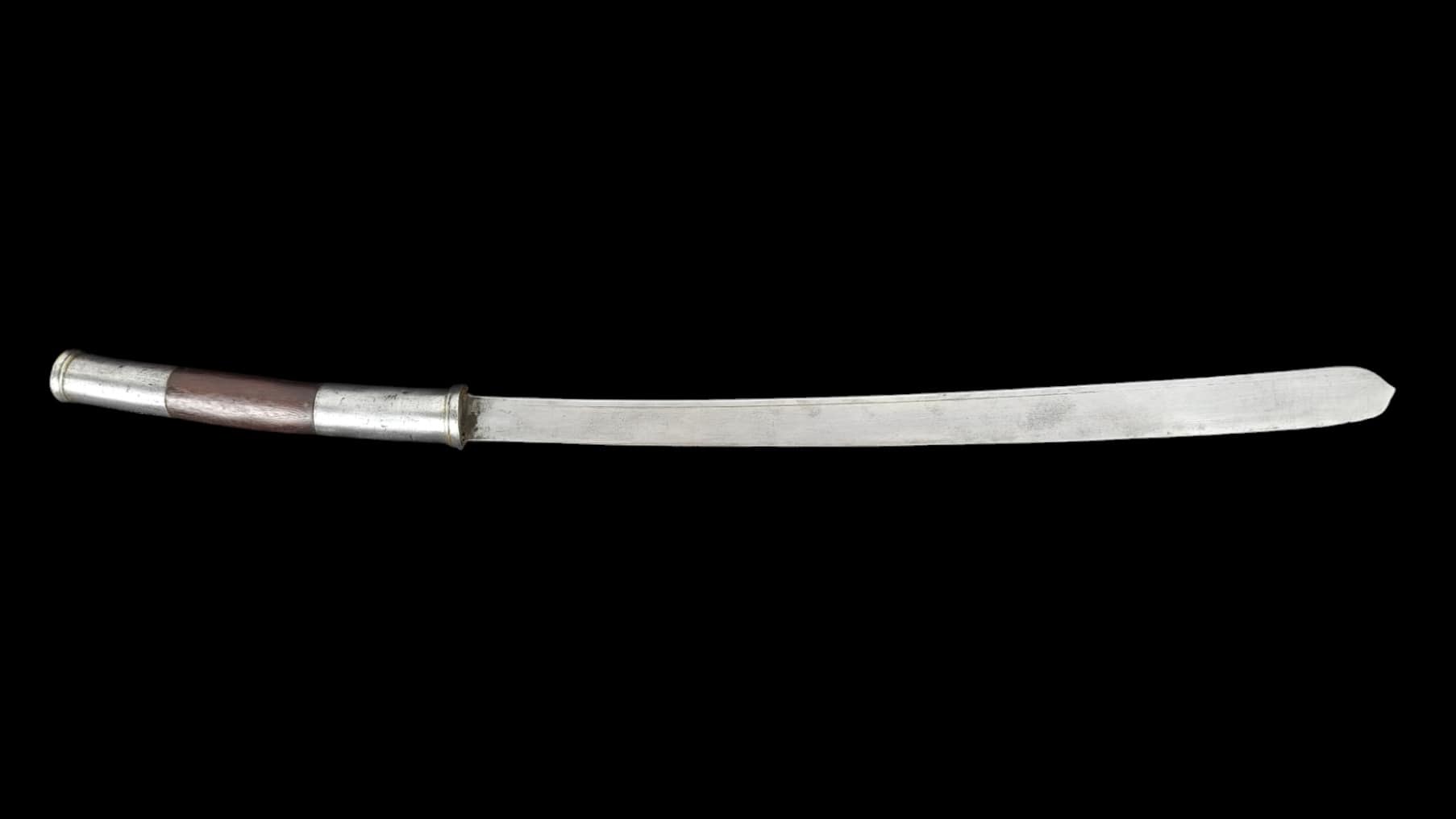
Asian Arms
The lotus is a motif often encountered in swords from Southeast Asia, often as a bulbous pommel, but also incorporated into other elements. The motif can be often be found as a reflection of the distinctive spreading petals in art and decorative metal work. However another type is the 'hua bua' form.
Read more
Tip of the Lotus
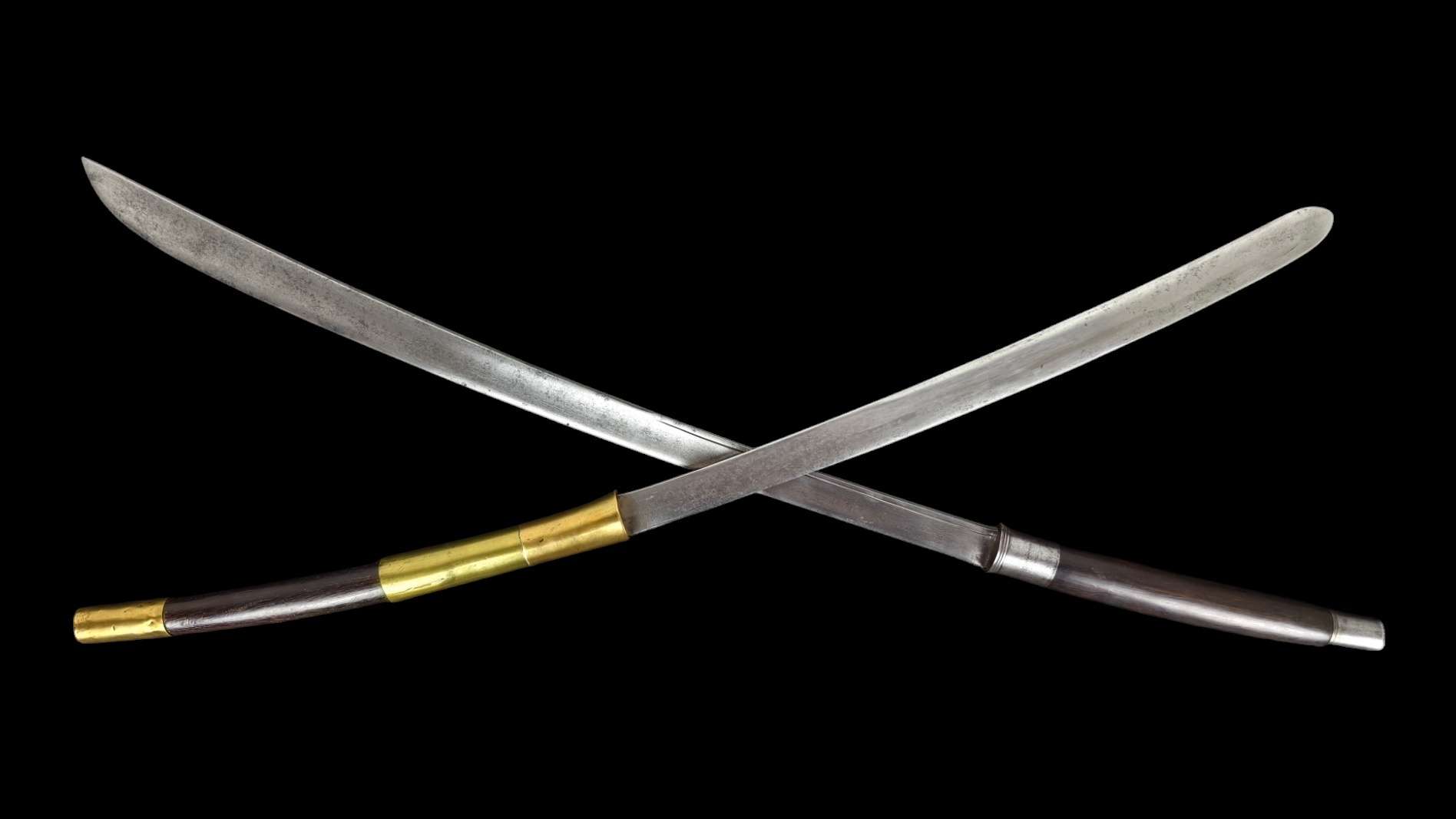
Asian Arms
Dha and daab are often grouped together by western collectors, often misspelled as 'dah' and invariably assumed to be Burmese. Collection records are often spotty at best even with museum pieces and a record of a country where something was acquired in fact says very little regarding its true origins.
Read more
Familiar Enemies
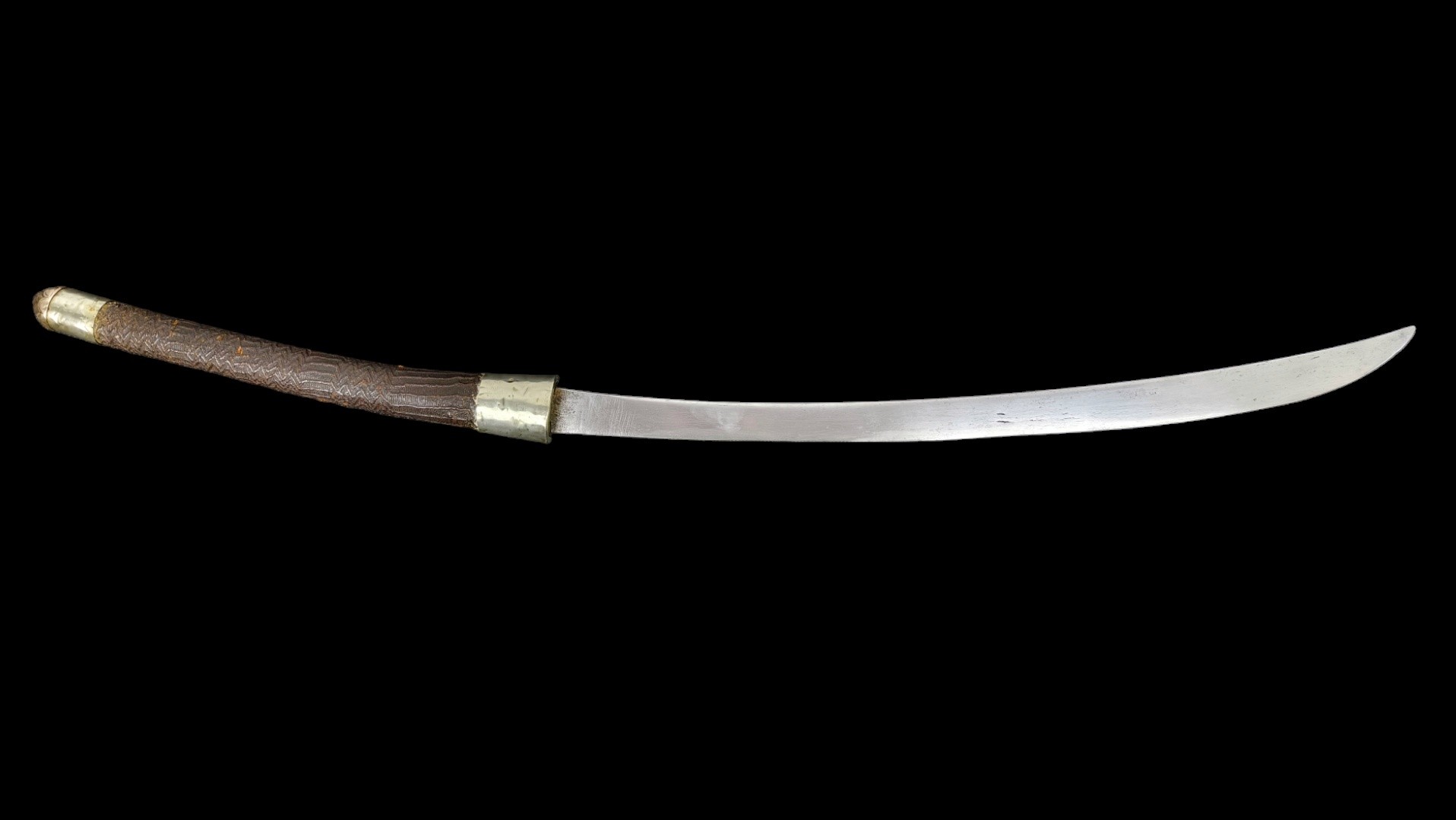
A Northern Thai Mystery
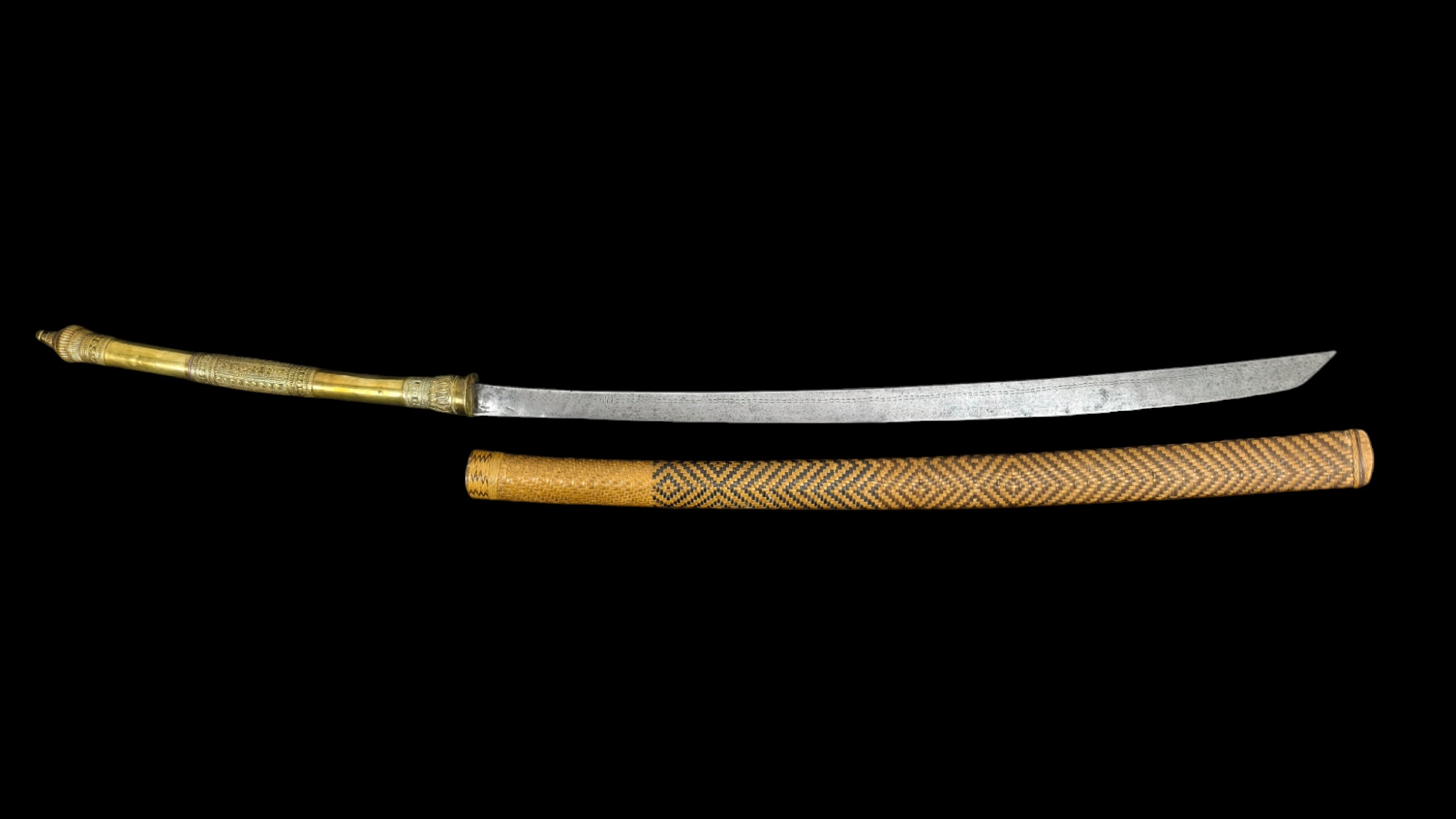
Asian Arms
I have previously written about the probable connections between a type of cast bronze handled swords found in the area of southern Laos, northern Cambodia and across the border into parts of Vietnam which are commonly referred to as an 'Attapeu type'
Read more
Attapeu & Lan Xang - Swords of Bronze
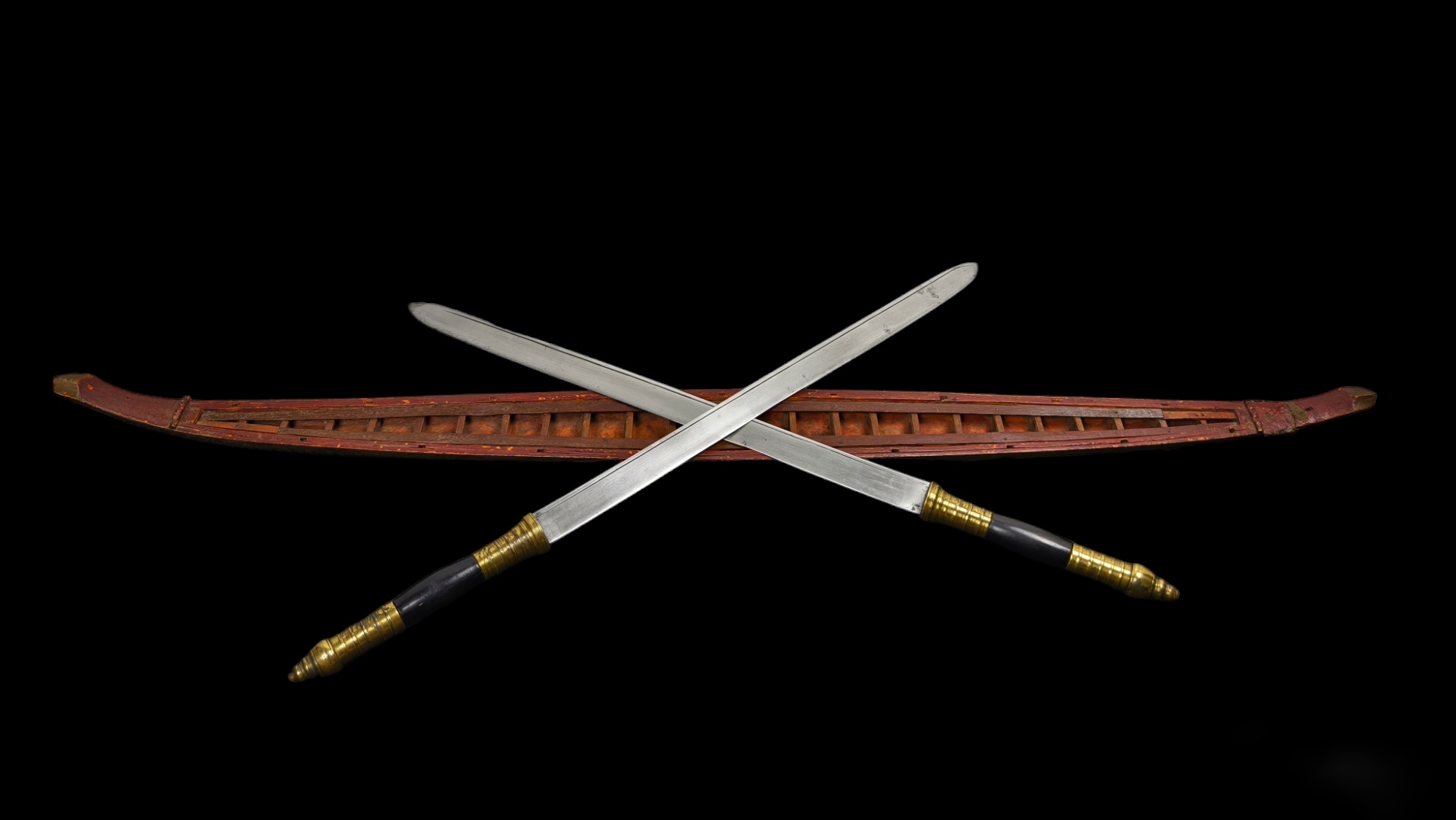
Asian Arms
Rivers are the highways of Southeast Asia. In a region covered historically in dense vegetation and jungle, travel was difficult overland and waterways played a key role in commerce, warfare and political control. The great rivers of Southeast Asia such as the Mekong, the Chao Phraya and the Irrawaddy
Read more
Barges and Swordsmen
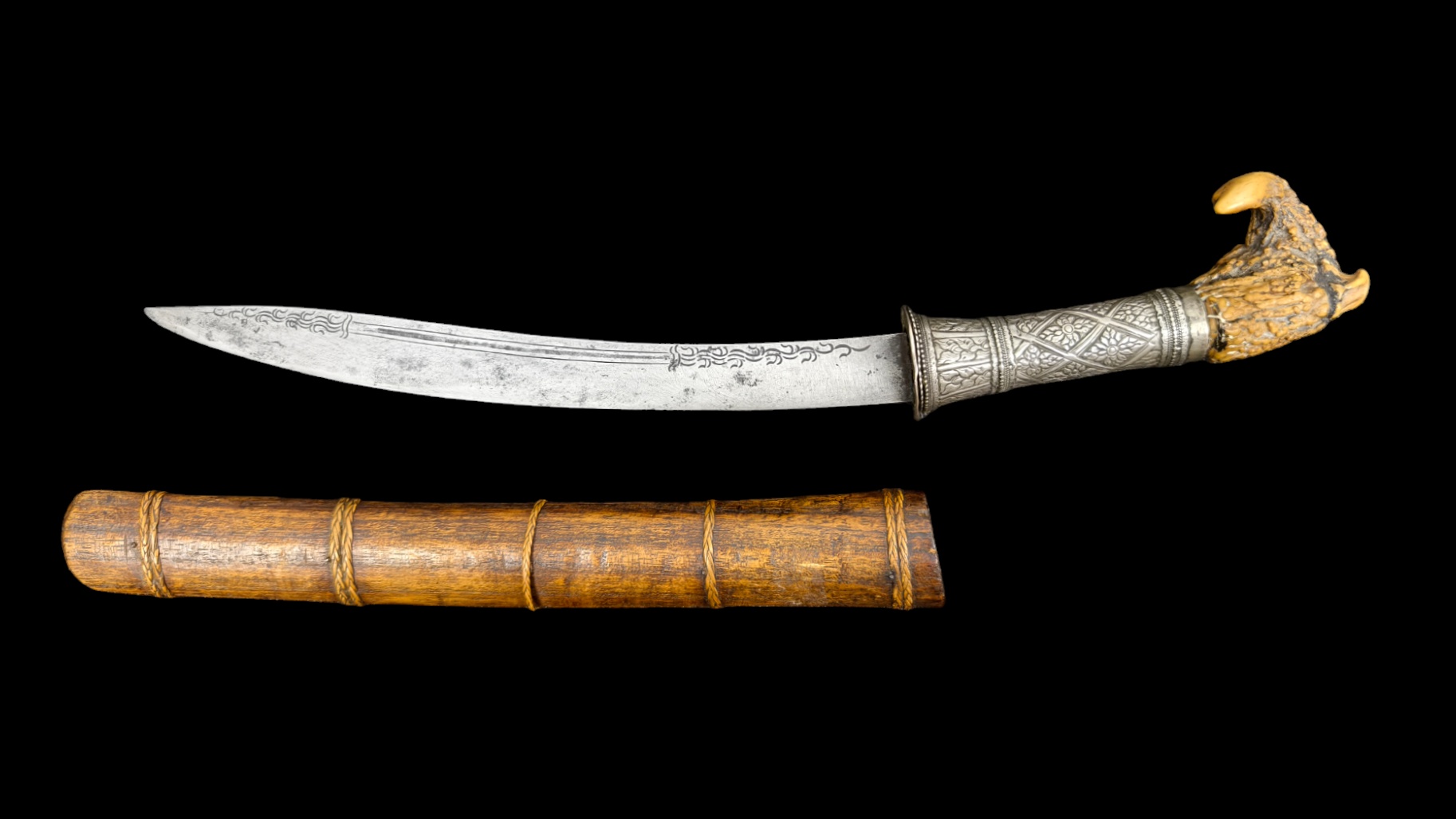
Asian Arms
Knives and their role in ritual are a theme seen across many cultures. Knives with magic connotations are also not unusual, as common implements they often feature in myth, legend and tales of magic, being a fundamental tool found in almost all cultures.
Read more
Knives, Ritual and the Muntjac
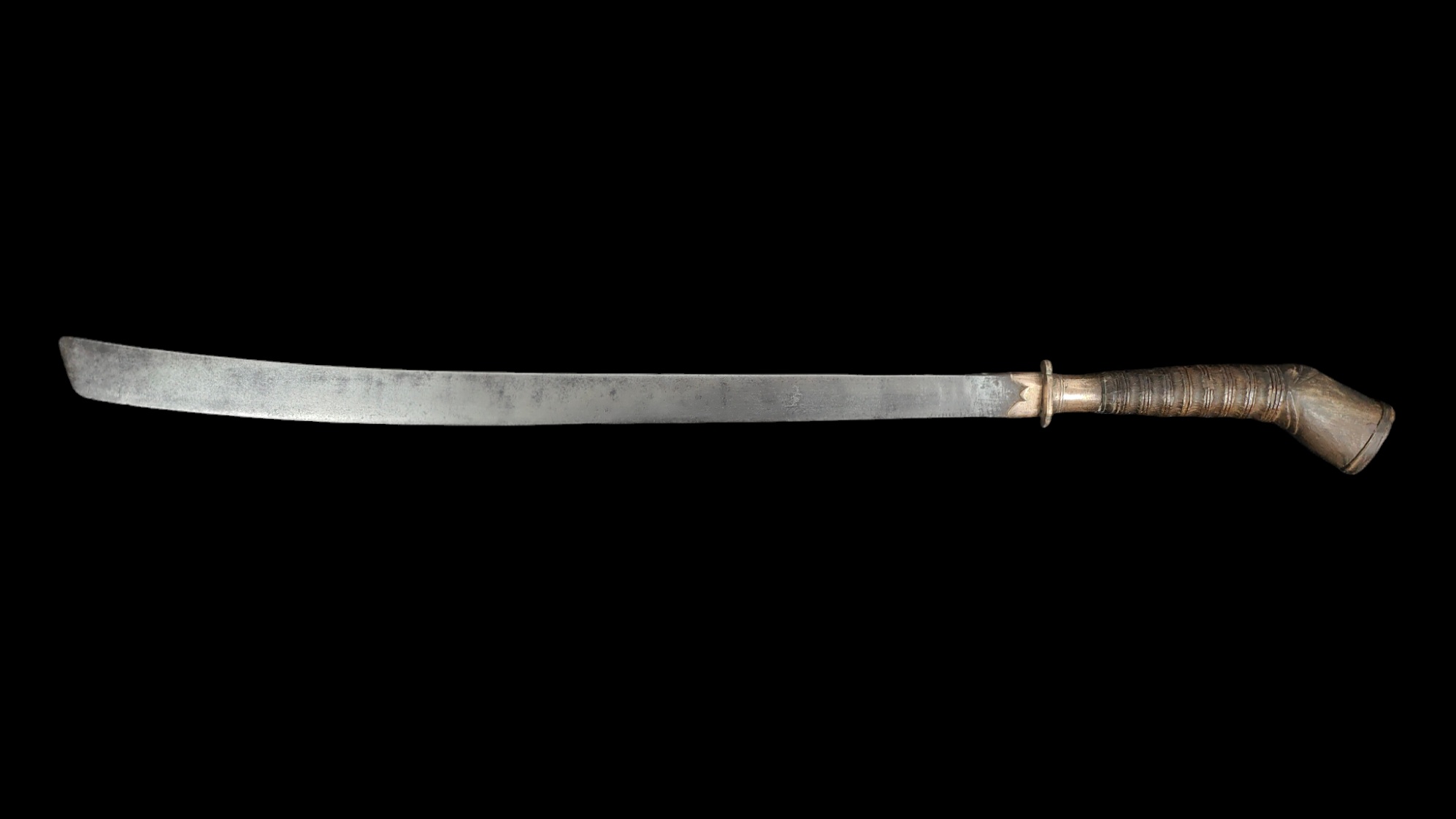
Asian Arms
This intriguing sword is from modern day Northern Vietnam, and likely from the provinces of either Thai Binh or Nam Dinh to the south and east of Hanoi. This was the territory of the Trinh Lords, the unified Nguyễn dynast and later Tonkin under French colonial rule.
Read more
A sword from Northern Vietnam
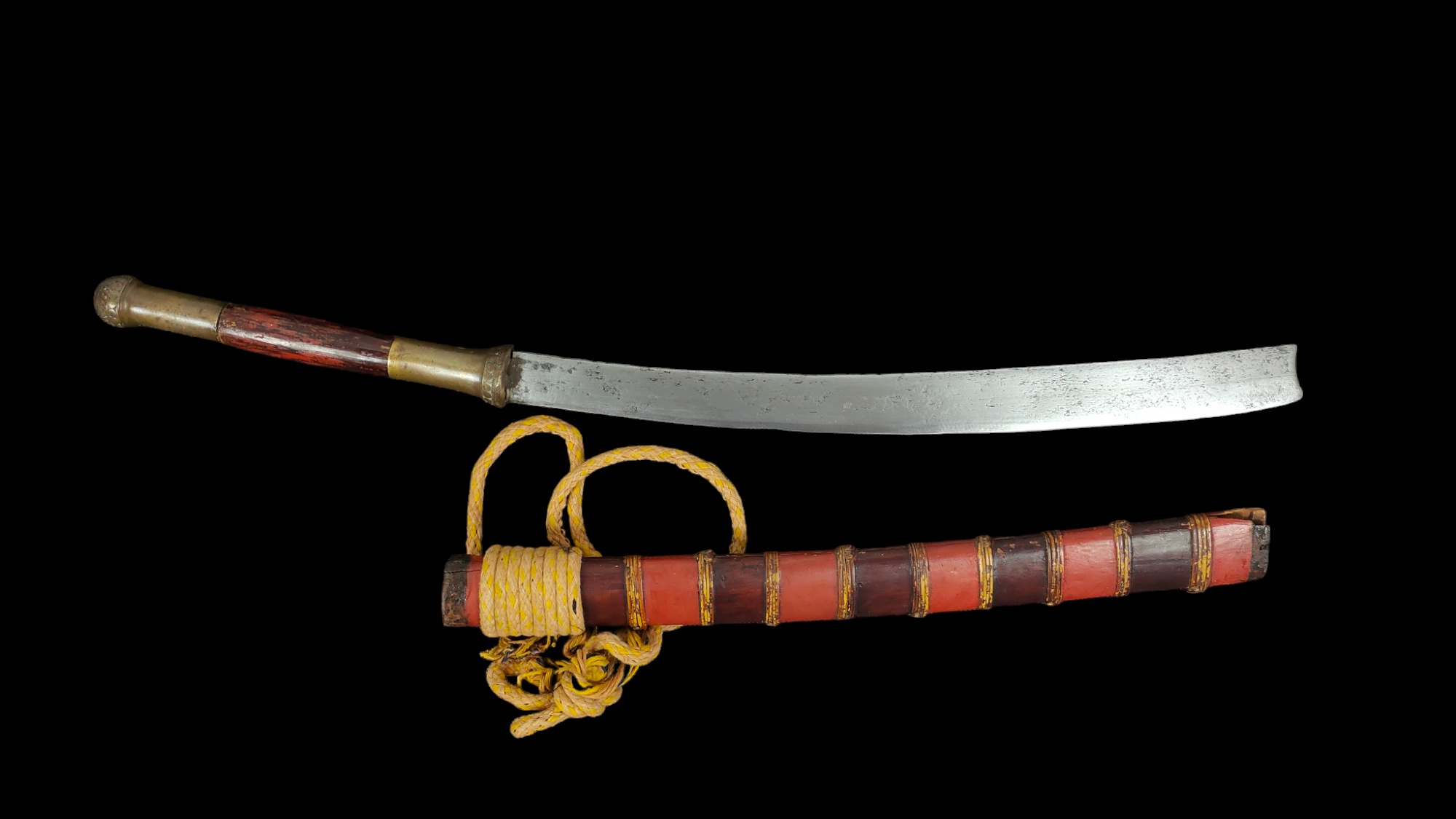
Asian Arms
Burmese swords are an intriguing part of what we know as "dha" or "daab", in that they are some of the most commonly encountered examples on the collecting market but also some of the least understood, particularly from more remote states.
Read more
Swords of the Chin Hills

Asian Arms
Laos is the smallest country in Southeast Asia by population and the most isolated, but it has always maintained an import role in the region's history. At times it was unified under a central kingdom known as Lan Xang, land of a million elephants, and in later periods it splintered into regional kingdoms.
Read more
The Sword of the Elephant

Asian Arms
The sword that is the subject of this article typifies a stereotype, but a well earned one, regarding the Shan states of northern Thailand, Burma and historically extending into modern day Yunnan. Even today these areas are considered an enigma, difficult to access, with rugged terrain, wild and mysterious.
Read more
Mysteries of the Shan
.jpeg)
Asian Arms
The kingdoms of the Chams, or Champa, are one of the least understood and popularised regions and cultures in Southeast Asia. While the Indic influenced Khmer Kingdom is well known and Angkor Wat stands as a "wonder of the world" the equally Indian influenced Cham civilisation is relatively unknown.
Read more
A Sword of Champa

Asian Arms
The Preah Khan is a 12th century temple complex at Angkor. Translated as "Royal Sword" it was built by Jayavarman VII in the 12th century. It is an early example of the importance of the sword in Khmer culture and in particular its relationship to royalty and ceremony.
Read more
Preah Khan - Ceremony, Royalty and Swords
.jpeg)
Asian Arms
Iron and bamboo are two materials which typify the weapons and culture of southeast Asia and are found together in this sword from Burma. While visually a quite plain and simple piece, this dha is in fact an intriguing example which exhibits the true fighting character of swords from this region.
Read more
Iron & Bamboo
.jpeg)
Asian Arms
I have a fascination with working knives from all cultures but particularly those from south east Asia. One of the reasons for this is that you occasionally find examples like this one that are of a design which is completely practical, but also show a degree of workmanship and decoration that tells us something of the status of the owner.
Read more
A Working Knife
.jpeg)
Asian Arms
The last sword added to this website was an impressive example from Isaan in modern Thailand which was likely paired with a shield. I have recently started to be fascinated by examples obviously made to be used in this manner. Many dha have deceptively long handles often leading to western collectors to misidentify them as 'two-handers' when in fact they are nothing of the kind and almost all dha are intended for single handed use.
Read more
Sword & Shield
.jpg)
Asian Arms
This is a sword that is a striking illustration of the diverse nature of southeast Asia and is a living testament of how peoples and cultures moved acrossed borders historically. This particular piece was 'found' in modern day Isaan, specifically in Ubon Ratchathani province of Thailand. On the surface it may look like any other lotus bud pommel, cast hilt style sword from these regions but the devil, as always, is in the details.
Read more
An Isaan Puzzle
.jpg)
Asian Arms
One of the interesting characteristic of dha/daab is the endless variety but also common patterns. While many dha or daab were made for in large numbers for military purposes and generally follow a familiar form, there are others that exhibit countless variations and configurations as a reflection of their owners. This can range from decoration, talismanic elements, changed pommels and furniture and use of exotic materials but also at a more fundamental level the core elements of the sword which dictate its use and function.
Read more
Swords and Individualism
.jpg)
Asian Arms
The Champa kingdom and the Khmer kingdom of Cambodia were great regional rivals with a history of frequent and bloody conflict. However, they were also similar in many respects being both Hindu kingdoms drawing on a long tradition in southeast Asia of Indian influenced culture, in particular the kingdom or Mandala of Funan. This was manifested not only in religion but also in the use of Sanskrit and a shared iconographic style.
Read more
Tracing Echoes of the Champa and Khmer
.jpg)
Asian Arms
While most collectors would be familiar with dha/daab and some of their many variations, depsite their proportions and long handles these swords are not in fact two handers but rather use the long handles to achieve the desired balance and handling characteristics. However, far more rare and barely known, there exist true two handed swords in these regions, from Thailand to Laos, Cambodia and Vietnam. The history of these weapons is fascinating and involves the brief period of Japanese overseas adventurism in the mid to late 16th century and early 17th century before an enforced return to isolationism by the Tokugawa shogunate in 1635.
Read more
Giants of Southeast Asia
.jpg)
Asian Arms
This particular piece is from an intriguing family of weapons, most commonly found in Cambodia but also in Thailand and parts of Laos and Vietnam, often known to collectors as a ‘mak’ but locally known as a ‘kokok’ ‘phkeak’. The exact source of the term ‘mak’ is currently not known to me but for some reason has become the term of choice among western collectors. Similar to a phenomenon seen with other ethnographic weapons where a label that may belong to only one language or people group is applied as a blanket term over time.
Read more
A Weapon and a Tool
.jpg)
Asian Arms
This is an unusual sword, both for the fact that I don't usually collect anything in this condition and also that it is part of a subset of swords that have surfaced in western auctions over the years, all in a similar state. They have often been advertised with outlandish claims of medieval dating, presumably because of the 'relic' like appearance. The truth is much more mundane but no less interesting.
Read more
A relic of Invasion
.jpg)
Asian Arms
This may sound like a strange title but as with many of my articles and musings, this is an attempt to paint a picture, through a small physical characteristic of a sword, of a wider interconnected world of trade, warfare, and cultural exchange. In this case the title is a bit literal as the collar under discussion quite literally migrated across large areas of the globe. The sword I will use to illustrate this is an early example likely from the northern regions of Thailand where the modern day borders meet Laos and Cambodia.
Read more
A Nomadic Collar

Asian Arms
have a tendency to sometimes buy swords that might turn off most collectors due to issues with condition. This could be a piece that requires extensive cleaning or stablisation, or, in the case of this piece, damage which for some might make the perceived value much lower. This particular sword has a hole in the pommel, likely due to a weakness in the original lost wax casting, which was further exploited by factors like humidity expending organic materials within the hilt. Despite this there were several factors that led me to purchase the sword.
Read more
Battle Scars

Asian Arms
Swords of southeast Asia are very much a reflection of the cultures that made them and by the 17th century what is now modern-day Myanmar, Thailand, Laos and Vietnam were truly diverse in the personnel and influences to be found in their militaries.
Read more
At the Crossroads - a sword of many influences
.jpg)
Asian Arms
This is a particularly interesting dha sword from Burma, most likely from the Ava region, it is a very large example with a blade of unusual quality and a finally made silver hilt. Dha are notoriously difficult to pin down due to a lack of archeological record and published typologies. There tends to be an extremely wide variety of variations seen according to the preferences of the owners and users of these swords. However there are at times characteristics of blade shape and hilt attributes that help to narrow down the probabilities.
Read more
A Well Travelled Warrior
.jpg)
Asian Arms
This intriguing sword is a mystery on several levels. When it appeared at auction in the UK it attracted no attention, I was in fact the only bidder. Part of that can be attributed to the condition, a heavily pitted and corroded blade, and partly the piece simply does not fit into the usual types of dha seen.
Read more
A Burmese Mystery
.jpg)
Asian Arms
After something of a long hiatus this website will start to be somewhat active again. After a break in actively acquiring new pieces and much work on a hopefully soon to be available small book summing up my work with the takouba form, I have decided to indulge collecting interests long dormant as I pursued only pieces relevant to my African research. Most of those pieces have found new (and I daresay good!) homes, leaving space for a part of the world I have always found fascinating - South East Asia.
Read more
The Everyday Sword

European Arms
This extremely rare sword from the collection of Dr. Lee Jones represents a rarely encountered subtype of swords which are thought to be either Fatimid or Byzantine and heavily influenced by Arab designs. Extant examples are few and the piece presented here is unique in several respects.
Read more
A Likely Byzantine or Fatimid Sword of the Xth – XIth Centuries

African Arms
I have noted in the past the trade in blades within the Sahel, the great trade routes that bore them on their long journey over the desert sands, but I have written little about the other key element of warfare in these cultures. As much a part of the panoply of war as the spear and the sword.
Read more
Of Horseflesh & Steel

African Arms
While all of us who have an interest in takouba owe a debt to Lloyd Cabot Briggs for his seminal article on Tuareg swords, there is an interesting typological distinction he makes which has stuck, somewhat unquestioned, for years. Briggs divides the hilts of Tuareg swords into a central type, less peaked pommel and leather covered guard, southern, larger pommel and brass guard plates often with round extensions and a Sudanese type with a more spherical pommel and leather guard and grip.
Read more
What's in a Guard - The Myth of the Southern/Central/Sudanese Takouba

African Arms
I will never claim to be much of a restorer, but occasionally I happen along a piece in need of rescuing. Something that many would pass over due to condition, but that has value because of its features regardless. One such piece came up on auction in December of last year. I was fortunate enough to secure the lot and by February it was in my hands.
Read more
Reclaiming History

African Arms
One of the most interesting features of ethnographic swords which have a long history of using imported blades is that the locally made blades tend to closely emulate the imports, both in style and the markings applied. Over time it is not inaccurate to say that the form of takouba and kaskara, as well as many West African swords, owes more to the blades imported and then copied, than to any locally derived shape.
Read more
The Authentic Fake

African Arms
As an unabashedly focused collector I am often asked by fellow collectors why I rarely obtain arms outside of takouba and very related forms. I have always felt one cannot judge a sword form on the most typical examples. Rather, it is necessary to handle as many examples as possible to form any sort of opinion that runs deeper than a cursory description. This belief, coupled with the financial restrictions every collector faces has limited my collecting. For every interesting object I see, I mentally count how many takouba that equals.
Read more
To Specialize or Not

African Arms
There is a danger collectors often fall into when looking at period photography of arms, armour and warriors of inferring a historical past on the basis of how these cultures appeared in the 19th and 20th centuries. A tendency to assume a static nature to these societies and the continued permeation of the myth of Africa being stuck in a time warp.
Read more
Photographic Echoes

African Arms
There is a nasty historical reality to the great kingdoms of the Sahel. For all the grandeur of the gold trade including the fantastic stories surrounding Mansa Musa the ruler of the Mali Empire in the late 13th and early 14th century, the salt trade or even the ivory and leather trades, by far the most sustained and profitable commodity within the Sahel was humans. Or to put it bluntly, the slave trade.
Read more
The Sword and the Slave
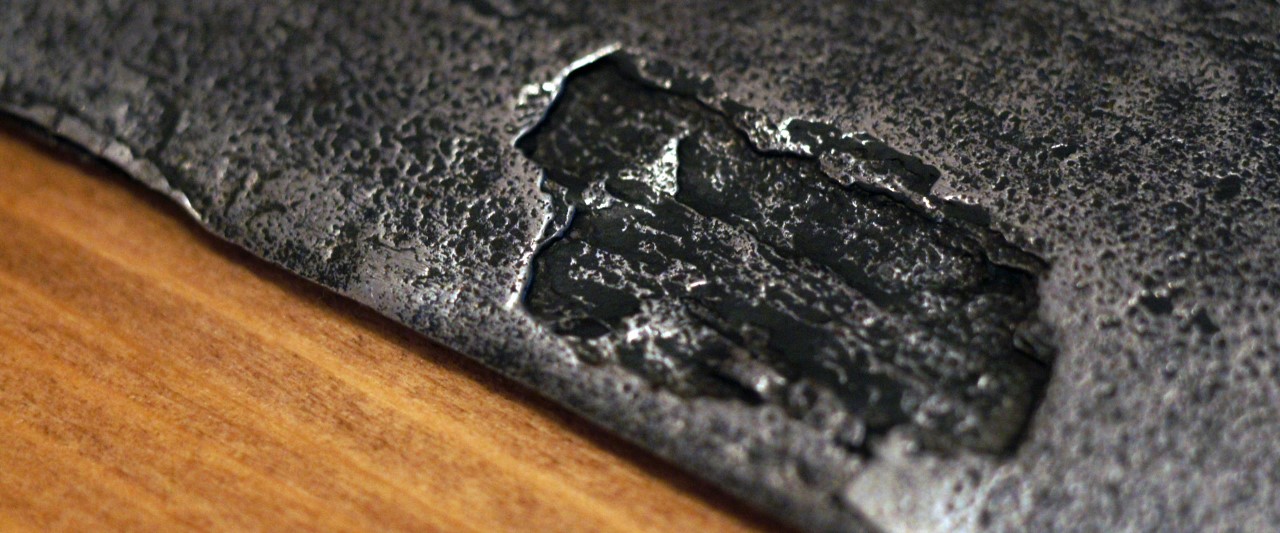
African Arms
The steel, at the heart of any sword, is often an enigma. Hidden by patina and age, the texture and properties of an antique sword are often not readily apparent. But occasionally an extant example will exhibit damage or flaws that reveals something of the inner character. This is one such example.
Read more
Inside the Steel

African Arms
I have talked before about classification and shared some thoughts on when a desire to precisely label a sword to a particular tribe is perhaps not as important as many ethnographic collectors stress or feel necessary. But now I want to talk about the opposite. When a sword has a place.
Read more
A Sword and its Place

The True Workhorse of the Sahel

African Arms
Another evening and another study session. The sword in question this evening, a modified, single edged European back sword, converted in the Sahel into a double edged takouba. This is a particularly interesting sword showing great age (the blade is likely 17th century) with local modifications and an array of marks that make pinning down a likely point of origin much easier than usual.
Read more
From Belluno to Agadez

African Arms
One of the real joys of collecting antiques is the knowledge that you have in your hands objects with stories behind them. Long years of use and journeys across areas often little known to outsiders. For me, there is a particular sense of history and perspective that metal brings. Iron, steel, brass, all are hard, require skill to form and significant effort to obtain.
Read more
The Gleam of History

African Arms
A peculiar and very particular style of takouba exists that differs widely from the usual assortment of trade blade and trade blade influenced designs. Rather than a long, parallel edged design with fullers, the wide bladed takouba is, by contrast, flat, triangular and of purely local manufacture. Termed fatefate in Hausa the style seems to occur in areas with Hausa influence including northern Cameroon.
Read more
Power & Status - Wide Blades

African Arms
There is a unfortunate stereotype of the African smith as a maker of rudimentary items and their efforts with arms and swords in particular as vastly inferior to European or Asian blades. To a degree this is true. For a variety of reasons softer steels were used, smelting techniques were more rudimentary and imported blades were usually favored.
Read more
Forged from the Sand

African Arms
Let's start with a very simple statement. This is not a good sword by pretty much any measure you can think of.
The blade is made from relatively soft steel or iron. The hilt is not particularly sturdy, the pommel is very basic and crudely made and the scabbard fittings are basic and display relatively little skill.
Read more
In defence of "poor quality" examples

African Arms
Every collector has a sword that is the "one". The one sword they would never sell, the one that slides smoothly into the hand and you simply know is an utterly devastating weapon. It does have to be the oldest sword you have, the prettiest or the most tangibly valuable. It is simple the piece that you connect with the best and instinctively know is the sword you would carry with you if that was required.
Read more
The "One"

African Arms
There are two oddly opposed themes with Sahel broadswords. Either incredibly vague generalizations or attempts to be so excruciatingly precise that the true range of particular forms is entirely lost. The first approach is typically to be found among auction houses, dealers, museums and some collectors with relatively over arching interests.
Read more
Classification and tribal attribution - How much is to much?

Trade blades in African swords

African Arms
It's a fair statement to say that those with an interest in arms and armour tend to be a pretty passionate bunch. I'm no different. I like to visit museums, gaze at swords I can never hope to own, read about the same in books and lust over pieces in the hands of other private collectors. But what I like most of all is learning something new about the pieces I am lucky enough to own.
Read more
Collecting & Research: A Synergetic Couple

African Arms
Conflict was a constant feature of Sahel life. Whether it was raiders from on the fringes of an empire, or clashing city states, armed struggles defined the expansion of influence, the control of trade routes and the rise to power of nations. Sahel warfare featured all aspects of armed conflict including firearms.
Read more
Warfare in the Sahel

African Arms
The term kaskara has long puzzled collectors and students of ethnographic arms as it is usually used in reference to the Sudanese sword with a straight blade and cruciform hilt well known from the Mahdist campaigns. However this word is not used locally in Sudan, rather the Arabic term saif is employed as most peoples who use kaskara were Arabic speakers.
Read more